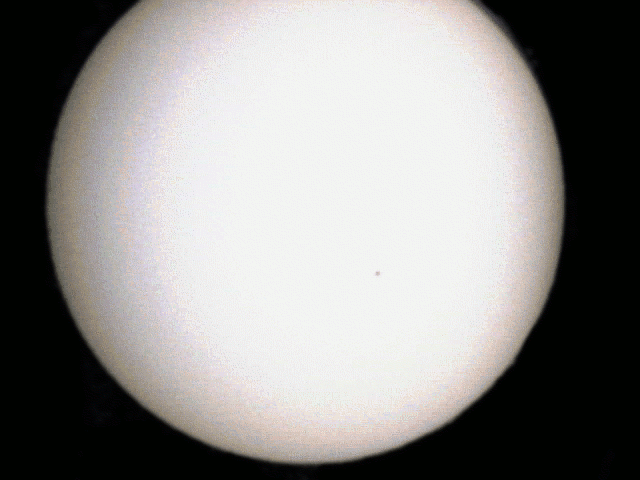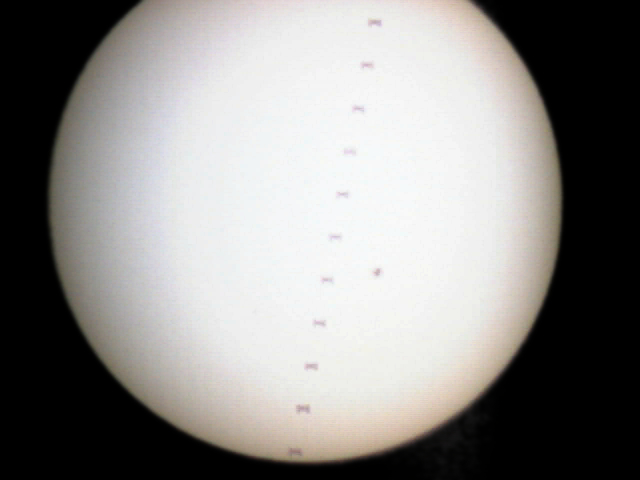Crossing the disk of the Sun
| International Space Station Crossing the disk of the Sun |
| HOME Best Lunar Planets Deepsky Misc Equipment Techniques Links |
| The International Space Station (ISS) is in low Earth orbit, and circles the Earth in approximately 90 minutes. The time that it passes overhead at any particular location varies day-by-day, getting earlier each day. When it is visible in the evening the ISS makes a stunning sight in the night sky. You can find out when to see the ISS using the Heavens Above or CalSky web sites. During the daylight the ISS is not visible but at certain times it can be seen passing the disk of the Sun or Moon. Just like an eclipse, transit, or occultation, this event is visible in a narrow band on the ground, at a certain time only. The time and place can be calculated using CalSky. It is recommended to check (or re-check) as close to the event as possible, because the accuracy will improve closer to the time, and the orbit of the ISS can (and does) change. This page shows the result of my imaging attempt when the ISS was visible from near Burgos in Spain, on 8 August 2010, at 11:34 am local time. Despite some cloud I was able to capture the event. I used K3CCDTools to capture the video and processing was done using K3 again, and The Gimp. |
| Webcam Video I captured 3570 frames using a Philips ToUCam 740 Pro webcam, imaging through my "Spain Scope" - a Celestron NexStar 102 refractor - fitted with a solar filter constructed from Baader solar film, and using a Baader IR-blocking filter and an 0.5 focal reducer. Of these frames, 11 contained the ISS. I was capturing at 15 frames per second, which shows that the entire transit lasted less than three-quarters of one second. This video is processed slightly - the background has been darkened, and the ISS sharpened. Click Here to see the original video as-captured. |
||||

|
||||
| to top | home | |||
| Still Images Here you can see an enlargement showing the Space Station against the Sun's disk and a composite image showing the path of the ISS as it transited the Sun. Note the additional dark object in the composite image is a Sunspot, one of two present at the time (the other is off the top of the image). |
||||

|
||||

|
||||
| to top | home | |||
 |
||||
| All text and images copyright and may not be used without permission |
||||